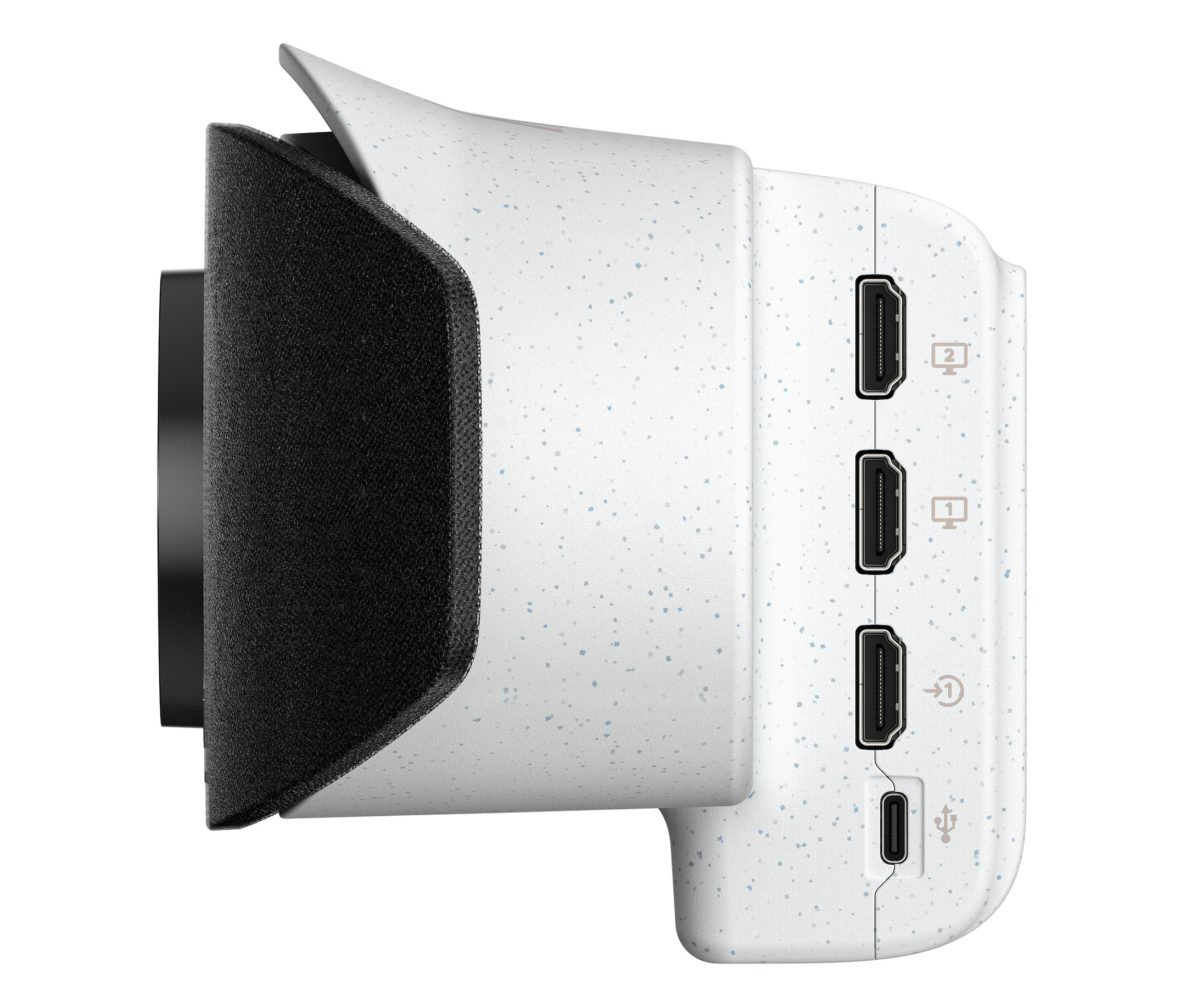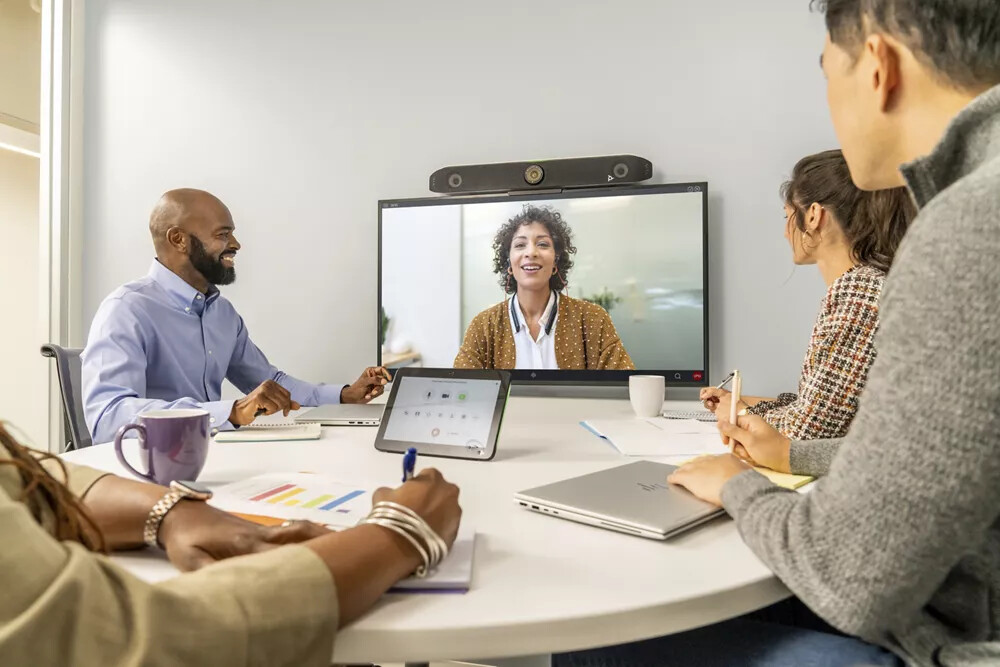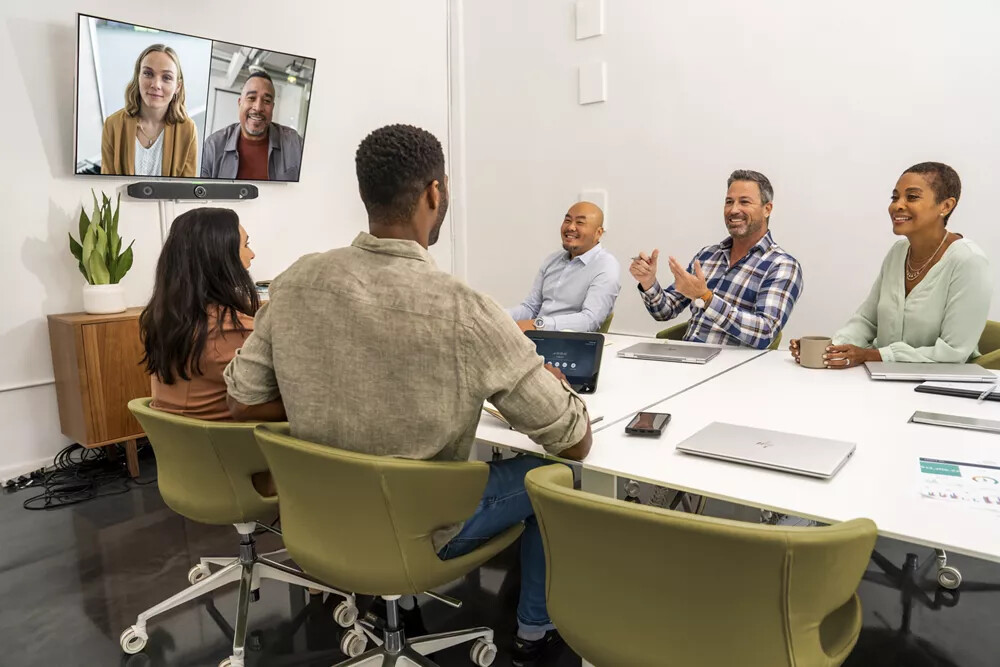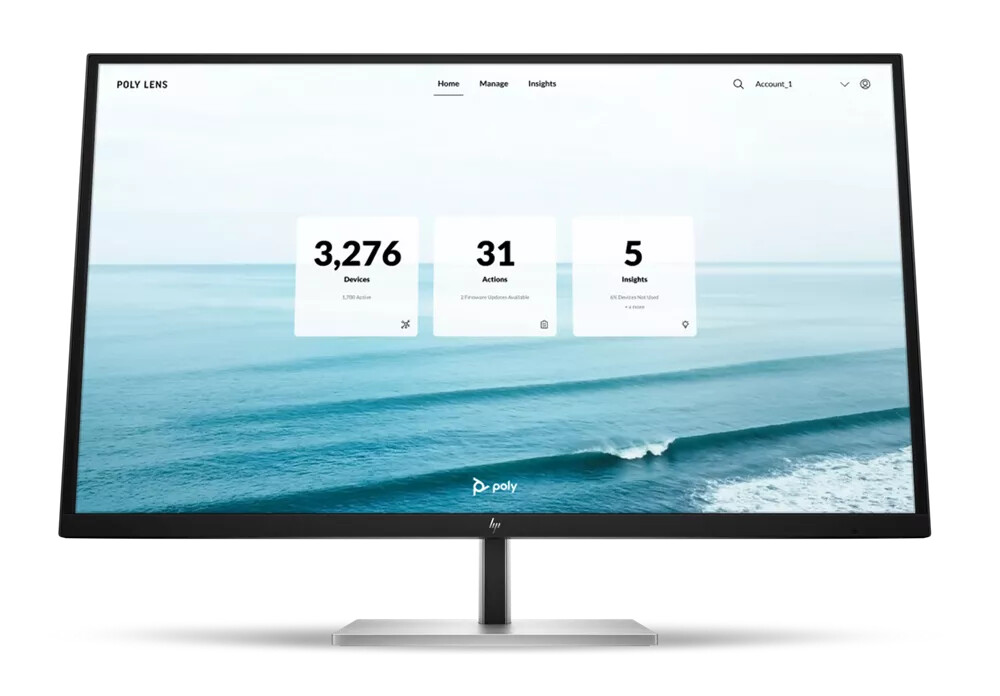































£3,238.99*
- Resolution 3840 x 2160 4K UHD
- Camera resolution 20 MP
- Field of view 110°


Product information
SIGNIFICANTLY BETTER MEETINGS
The Poly Studio X52 all-in-one video bar has been specially developed to improve the video conferencing experience in a hybrid environment. It simplifies and optimises meetings. Deliver an equal meeting experience with innovative audio and video experiences - both inside and outside the room.

Experience the following highlights:
- 4K UltraHD camera with 20 MP and 95° field of view
- Poly DirectorAI smart camera technology
- Simple setup and all-in-one design
- Poly NoiseBlockAI and Acoustic Fence technologies
WIRELESS VIDEO CONFERENCES WITH VARIOUS CONNECTION OPTIONS
Provide users with the flexibility to participate in cloud video calls with integrated apps, standards-based protocols or via their personal devices connected to the room system.

TURN YOUR VIDEO CALLS INTO AN IMPRESSIVE EXPERIENCE WITH AI-BASED CAMERA FEATURES
Ensure everyone can perform equally on a call with high-quality audio and video combined with innovative technologies from Poly that include precise AI-optimised automatic framing and intelligent audio filtering.

INTELLIGENT INSIGHTS, SCALABLE MANAGEMENT
Gain a better view of workspaces across the enterprise with Poly Lens remote device management. IT professionals can remotely monitor and troubleshoot Poly devices and streamline software setup and policy adoption.

EASY DIGITAL SIGNAGE IN YOUR VIDEO CONFERENCE ROOMS
Poly video conferencing solutions can now deliver digital signage content from Appspace and Raydiant between meetings. Poly Lens cloud management makes delivery a breeze.
We work wherever you work
Video solutions from Poly make meetings a breeze. Use cloud video apps for a comprehensive experience with all the features you know and love. Or use standards-based SIP and H.323 compatibility to connect to various cloud video services throughout the day.
Technical data
| Name | Poly Studio X52 Conference Camera, 3840 x 2160 4K UHD, 20 MP, 60 fps, 110° |
|---|---|
| Article number | 1000031123 |
| GTIN/EAN | 0197497110562 |
| Manufacturer SKU | 8D8K2AA#ABB |
| Model name | Studio X52 |
| Brand | Poly |
| Product Type | Conference Camera |
| Resolution | 3840 x 2160 4K UHD |
| Frames per Second | 60 fps |
| Focus type | Manual & automatic focus |
| Digital Zoom | 5 |
| Camera resolution | 20 MP |
| Field of view | 110° |
| Inputs | 1x Ethernet , 1x HDMI , 1x USB-C , 2x USB-A |
| Outputs | 2x HDMI |
| wireless technology | AirPlay , Bluetooth , Miracast , WiFi |
| Product width | 76.95 cm |
| Product height | 11.52 cm |
| Product depth | 10.3 cm |
| Weight | 2.54 kg |
| Colour | Black |
| Delivery contents | 2-way wall push-button switch , Ethernet cable , HDMI Cable , Lens cap , mount |
| Condition | New |
| Warranty | 24 Month |
| Warranty type | Bringin service Service and support information |
Product safety
| Person responsible for the EU |
|---|
| HP Deutschland GmbH |
| Herrenberger Straße 140 |
| 71034 Böblingen |
| Germany |
| firmen.kunden@hp.com |
- Standard slot for Kensington lock
- Security management:
- AES 128-bit encryption
- AES 256-bit encryption
- H.235.6 support
- Authenticated access to admin menus, web interface andAPIs
- Configuration of password policies for local accounts
- Security profiles
- Locking of local accounts and login ports
- Secure default settings
- Remote logging with support for TLS
- External authentication via Active Directory
- Binary FloorControl Protocol (BFCP)



